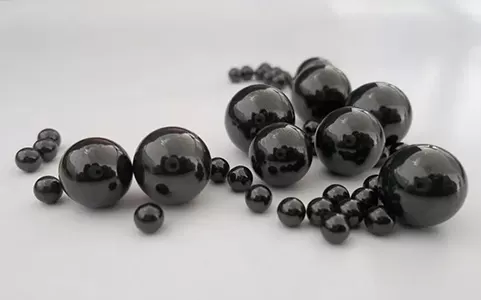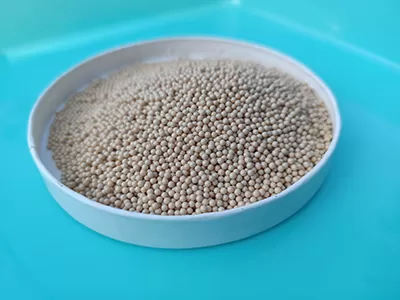Distinguishing the quality of ceramic balls involves evaluating appearance, dimensional accuracy, hardness, surface condition, and structural integrity, using visual inspection and specialized tests to identify superior products. These criteria help determine whether ceramic balls meet performance standards for their intended applications, from industrial grinding to precision bearings.

Visual inspection is the first step in assessing quality. High-quality ceramic balls have a uniform color without discoloration or spots, indicating consistent material composition. For example, premium alumina balls should display a bright white or off-white hue, while silicon nitride balls typically have a uniform gray or black color. Surface defects like cracks, chips, or pores are red flags, as they weaken the ball’s structure and reduce durability. Uneven surfaces or visible tool marks may signal poor manufacturing processes, affecting performance in applications like packing or bearings.
Dimensional accuracy is critical for functionality. Good ceramic balls have precise diameters and roundness, measured using calipers or roundness testers. High-precision balls, such as those used in bearings, should have diameter tolerances within ±0.001 mm to ±0.01 mm and roundness below 0.005 mm. Inconsistent sizes or shapes lead to uneven wear, increased friction, and reduced efficiency in machinery. For instance, mismatched ball sizes in a ball mill can cause uneven grinding and lower product quality.

Hardness testing reveals wear resistance, a key quality indicator. Using Vickers or Mohs scales, high-quality ceramic balls exhibit consistent hardness values. Alumina balls with 95% purity should have a Vickers hardness of 1800–2200 HV, while silicon carbide balls should exceed 2800 HV. Lower hardness than specified suggests impure materials or improper sintering, leading to rapid wear in grinding or bearing applications. Testing multiple samples from a batch ensures hardness uniformity, a sign of reliable manufacturing.
Surface condition impacts performance in critical applications. Superior ceramic balls have smooth surfaces with low roughness (Ra values), measured using profilometers. Bearing-grade balls require Ra values below 0.05 μm to minimize friction, while grinding balls may have slightly higher values but still need consistent texture. Rough or uneven surfaces increase friction, generate heat, and accelerate wear, reducing service life. Surface contamination, such as residual abrasive particles from manufacturing, indicates poor quality control and can damage equipment.
Structural integrity ensures long-term reliability. High-quality ceramic balls are free from internal defects like voids or inclusions, detected through ultrasonic testing or X-ray inspection. These flaws weaken the ball, making it prone to breaking under stress, especially in high-impact applications like mining grinding. A sound structure also resists thermal shock, an important trait for balls used in high-temperature environments, such as silicon nitride balls in aerospace engines.
Material purity is a hallmark of quality. Premium ceramic balls have high levels of their primary component, verified through chemical analysis. For example, top-grade zirconia balls contain 90% or more zirconium dioxide with minimal impurities, ensuring toughness and biocompatibility. Low-purity balls, with high levels of additives or contaminants, often exhibit inconsistent performance, such as reduced wear resistance or increased brittleness.
Performance testing validates real-world functionality. Good ceramic balls maintain their properties under operational conditions, such as wear resistance tests in ball mills or load tests in bearings. High-quality balls show minimal weight loss after extended use and resist cracking under pressure, while inferior ones wear quickly or break prematurely. For packing applications, quality balls maintain shape and surface integrity, ensuring efficient fluid flow and mass transfer in industrial columns.
In summary, test ceramic balls involves checking appearance, dimensions, hardness, surface condition, structure, purity, and performance. Combining visual checks with specialized tests ensures that only high-quality balls are selected, optimizing performance and longevity in their intended applications.



